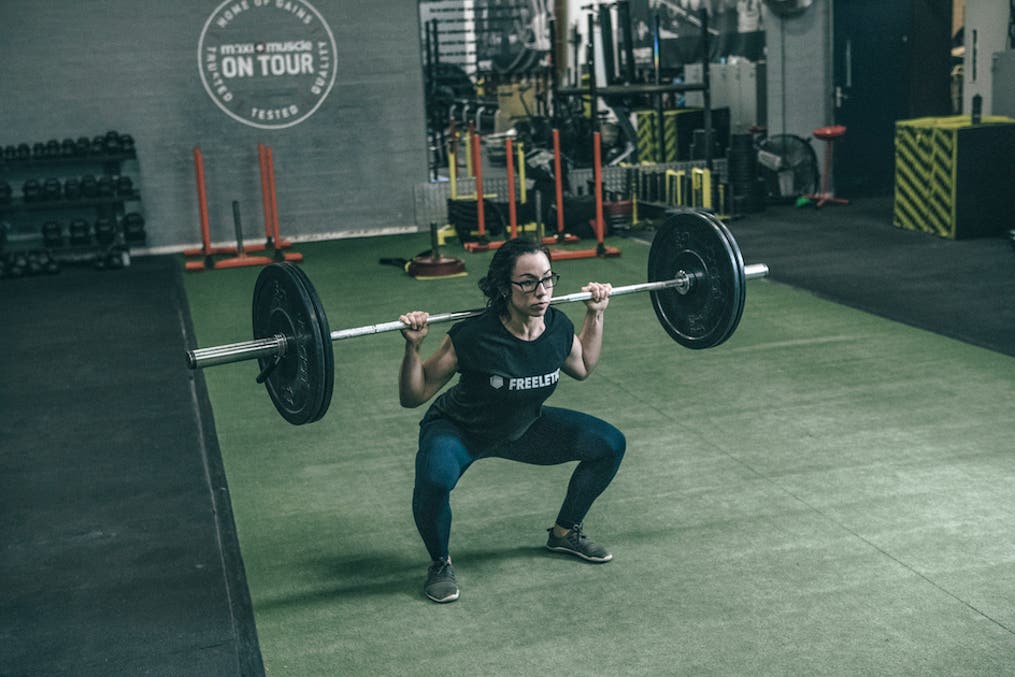It's probably the most popular lower body barbell exercise out there, but back squats are about far more than simply loading and lifting. Setup, technique and awareness all play a role in mastering the perfect squat. Here to guide you through everybody's favorite leg burner is Training Expert John-Francis Kennedy.
1) Movement mechanics - not just sitting back
The squat is a foundational lower body exercise which focuses on development of the quads, calves, hamstrings and glutes. It's probably the best mass builder for the legs.
Unlike the deadlift, the squat is a knee-dominant movement. You sit back by bending your knees - allowing them to track forward - and then extending them to get back to a standing position. Your hips bend and extend as well, which effectively trains your glutes.
It’s almost as if you were sitting down on a chair. You need to keep a straight back and neutral spine though. You further have to stabilize your knees and actively drive them out to prevent medial collapse.

2) The setup - one size doesn’t fit all
The setup consists of the stance, the grip and the barbell placement. Squat stance is a topic constantly debated. At Freeletics, we know that there is no one-size-fits-all squat stance. Rather it is an iterative process of finding out what’s best for your individual anatomy. Not everybody will be able to sit in a perfect deep squat. Not every hip is created equal. Some people can chill in the squat all day and even eat dinner in that position. Others might feel a pinching pain in their hip way before they even reach depth.
So how do you find the right stance for you? Start out by spreading the feet about shoulder width. You can point your toes out to open up the hips a bit more. A great test to find your stance, is by jumping off a small box. The position your feet are in when you land is likely a decent squat stance for you. But please, don’t treat this as a dogma. Adjust according to your needs.
Bar placement is a bit more straightforward. For a back squat, you would place the barbell on top of your shoulders. You could either go higher up towards the neck or a bit lower towards your rear deltoids. This is called high-bar and low-bar position. The front squat allows you to place the bar closer to your center of mass. For this variation you place the bar on top of your clavicles.
To hold on to the bar during a front squat, you either cross your arms on top or use a clean-grip. For the back squat you just grab the bar about shoulder width apart.

3) Tension - movement from A to Z
Butt wink is a common problem in the squat. It not only feels weird, but can also increase the risk for injury. Butt wink occurs, when the pelvis tilts. It’s a rounding of your lower back, which goes from straight to bent (flexed) in the bottom of a squat. It is usually a sign for lack of tension in the hips. This leads to an unwanted movement of the lower back which puts a load on the spine. Any movement here could lead to lower back pain. To prevent this, consider the following cue:
- Create tension in the hips. Torque in the hip joint optimizes stability not only in your hips, but also the pelvis and therefore the lower back. You have to create tension from the ground up, transferring the force from your feet to your hips. Imagine you are screwing your feet into the ground. The right foot clockwise and the left foot counter-clockwise. This strengthens the arch of your foot, pushes your knees out and creates tension in your glutes for peak power and minimal butt wink.
Don’t skip leg day
The squat is a great exercise that trains every muscle in your lower body with just one movement. It builds muscle, increases functional strength and even improves mobility and coordination in everyday activities. Don’t miss out on these great benefits and train the squat.